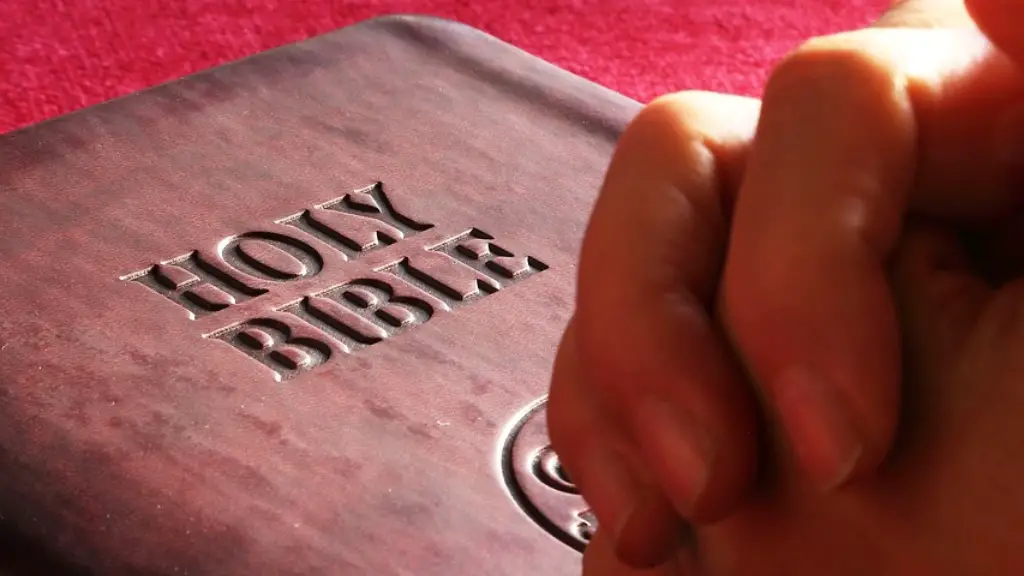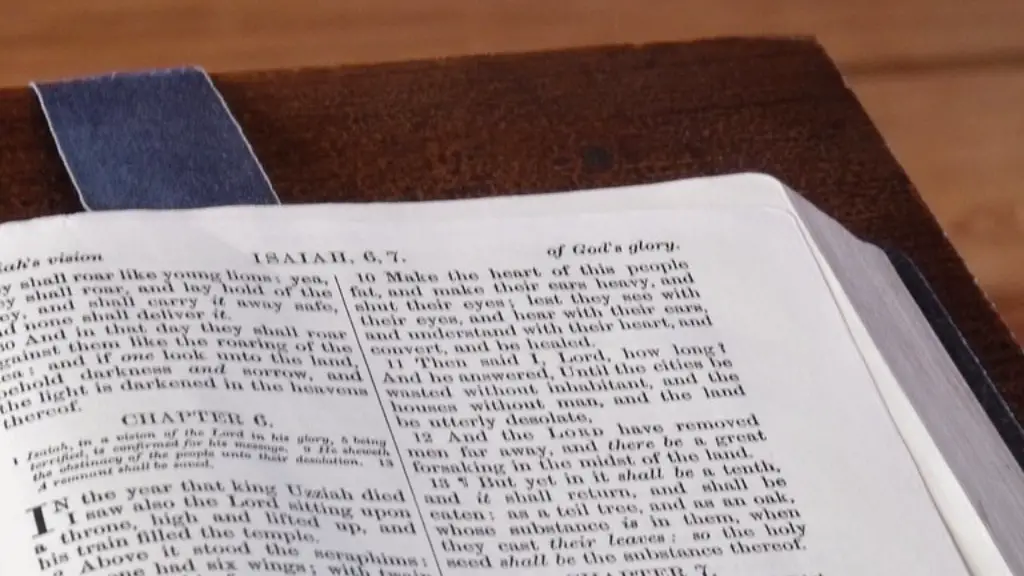Baal, also known as Bel, was a household name to the ancient citizens of the Middle East. He was worshipped by several ancient cultures, including the Phoenicians, Israelites, Moabites, and Canaanites. In the Bible, Baal is mentioned numerous times as a rival deity to YHWH, the God of Israel. The clash between Baal and YHWH has captivated scholars for centuries, giving rise to powerful debates about which deity eventually emerged as the victor. But who exactly was Baal, and why was he such an important figure in ancient societies?
The origins of Baal are shrouded in mystery. Early scholars inherited two conflicting stories or ‘origins myths’ from their ancestors. The first story claimed that Baal was the son of El and Asherah, the two great deities in the Canaanite pantheon. The second story claimed that Baal was the son of Dagon, a fertility god associated with grain, sea creatures and fish. While both stories were widely accepted, researchers remain divided on which was ultimately accurate.
What is beyond dispute is that Baal was a god of fertility and storms, two natural forces that were especially important in the arid Levantine region. By invoking Baal and offering sacrifices, the faithful believed that they could ensure good harvests and protect their crops from destructive weather. In some cases, such as the ancient Moabites, Baal was the main deity and associated with their ancient kings – giving them an even more prominent role in society.
In the Bible, we repeatedly find references to Baal worshippers forsaking YHWH, implying that Baal played an important role in the Israelites’ struggle for religious identity and autonomy. Archaeological evidence suggests that the cult of Baal was especially popular during the time of the divided kingdom, when various factions within the country competed for hegemony. This would explain the references to ‘Baal worship’ in the Bible and the ancient texts of the Middle East, which often depict Baal as the ‘Lord of Wars’ – an all-powerful god sent to protect the faithful.
While Baal has long disappeared from religious practice, he continues to hold a special place in the hearts of many scholars and religious thinkers. For centuries, theologians have debated the role of Baal and whether he was an enemy or an ally to YHWH. Some see Baal as an rebellious ‘satan-like’ figure, while others view him as a potential ‘mediator’ between YHWH and the wider world. Such interpretations have contributed to our understanding of the Bible and encouraged us to think more deeply about the theology and worldview of the ancient Hebrews.
Influences on Israel’s History and Culture
The impact of Baal on the Israelites is still apparent today. Baal played a fundamental role in the political and religious life of the Israelites, as evidenced by the numerous references to him in the Bible. Baal’s influence was not limited to worship either. According to many scholars, his cult heavily impacted Israel’s economic and social life too. Furthermore, Baal was closely intertwined with the history of ancient Israel and provided an alternative narrative to YHWH, one that was capable of surviving outside of the Hebrew culture.
The presence of ‘Baal worship’ in the Bible suggests that the ancient Israelites were in some way exposed to the cult of Baal. Interestingly, the cultures of the ‘Canaanite pantheon’ had a presence in many parts of the Holy Land – even in Jerusalem itself. All of this evidence indicates that Baal’s influence was much broader and deeper than previously thought, with significant implications for understanding the beliefs of the early Israelites.
At the same time, there is much about Baal that remains mysterious. Despite centuries of research, we still cannot be sure of his precise origins or the full extent of his influence on ancient Hebrew culture. There are various theories and interpretations, but ultimately the real answer may never be known. Nevertheless, Baal’s presence in the Bible has provided us with an invaluable insight into the culture of the ancient Israelites, allowing us to explore the many features that made up the society of this ancient civilization.
Baal’s Legacy
Baal’s role in the Bible has sparked debate for centuries. But despite being an ancient figure, Baal’s legacy remains surprisingly relevant today. His cult has been studied by scholars and spiritual masters alike, who have sought to uncover the secrets of Baal and understand why he was so important to the ancient Israelites. Such studies have provided us with valuable insight into the worldview of the ancient Hebrews, as well as the complex relationship between YHWH and Baal.
The power and mystery of Baal is part of what makes the Bible so captivating. In many ways, his story provides an ideal window into the lives of the ancient Israelites, allowing us to understand their beliefs and struggles in a much deeper way. In that sense, it can be said that Baal’s legacy continues to live on, inspiring us to ask bigger questions and explore the ancient world in new and exciting ways.
Baal in Comparative Religion
The scholarly interest around Baal has also extended outside of the Bible. In particular, the study of comparative religion has been a major force in our understanding of the cult of Baal. By exploring how other cultures treated Baal and how his cult was integrated into their own belief systems, scholars have gained a clearer understanding of Baal’s importance and legacy. Additionally, comparing Baal to other deities from other cultures has also allowed us to explore his role culturally, socially, and politically.
Comparative religion has shed new light on Baal’s legacy and helped us to explore themes such as identity, dogma, and ethics. Looking at Baal through the lens of comparative religion can tell us a great deal about the relationship between YHWH and the ancient Israelites, as well as the larger spiritual landscape of their time. Ultimately, it is clear that Baal’s cult is a complex and fascinating topic that reflects the dynamism and complexity of religious belief and practice.
Modern Perspectives on Baal
Though Baal has been long forgotten in religious practice, he hasn’t been forgotten. In the past few decades, scholars around the world have begun to engage with the legacy of Baal in contemporary contexts. In particular, many have explored the ways in which Baal’s lessons can be applied to our modern lives. In particular, many see Baal’s cult as a way to explore the relationship between power, authority and choice.
Others view him as a symbol for the power of collective action, or as a cautionary tale about the consequences of disobeying the will of YHWH. In these ways, Baal’s legacy can be seen as highly relevant in our own time – something that can provide us with valuable lessons and encourage us to think deeply about the complexities of faith and faith systems.
Thanks to its deep roots in the Middle East’s religious history, the cult of Baal remains a fascinating topic for scholars and believers alike. His story captures the imagination and provides us with deeper insights into the dynamics of the Bible, as well as the beliefs and struggles of ancient Hebrews. Whether as a god or a symbol, Baal’s legacy continues to live on, reminding us of the great power and potential of religion in culture and society.
Baal in Art and Literature
Though Baal may have been forgotten by the people who worshipped him centuries ago, his memory has been kept alive by art, literature and film. Baal features heavily in popular works of art, such as Oceans 8, in which he serves as a figure of natural justice and a symbol of courage. He also appears in various works of fiction, from John Milton’s Paradise Lost to Shane Meadows’ Baal. Baal also appears in multiple works of Classical music, with Gustav Holst’s works ‘The Planets’ being the most well-known.
However, Baal’s appearance in literature is not limited to fiction. His legacy has been explored more recently by scholars and religious thinkers in works such as David Dillard’s The Unique Status of Baal in the Old Testament and Tina Pippin’s The Voice of One Crying Out: Explorations of Baal Worship in Ancient Israel. These works reveal the complexities and ambiguities of Baal’s story, raising important questions about who he was and what his cult signified.
All in all, the influence of Baal is still very much a part of our culture today. His legacy has long been kept alive through global works of art and literature, reminding us of his key significance in the Bible and offering us valuable insights into the beliefs of the ancient Israelites. In this sense, Baal’s story never truly ended – it simply evolved, inviting us to explore the complexity and depth of the ancient world.
Conclusion and Impacts
It is clear that Baal has had a lasting effect on global culture. He has been celebrated in both art and literature, continuing to drive conversations and interactions between scholars, believers, and modern audiences. Sadly, much of what we know about Baal and his cult comes from the ancient mythologies, leaving much to be explored and discovered. However, it is precisely this ambiguity that has enabled Baal to remain influential in our culture, providing a space for further speculation and expanding our understanding of the world within which the ancient Hebrews lived.
Overall, Baal is both an important and a complex figure. We may never fully understand the circumstances that gave rise to his cult, but his impact on global culture is undeniable. By looking more closely at this mysterious deity, we can better appreciate the beliefs of the ancient Israelites and gain insight into their struggles and worldview. Whatever our opinion of Baal and his cult may be, his legacy is something that should not be overlooked.





